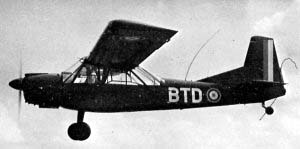| Nord 3400 Norbarbe | |
|---|---|
 | |
| General information | |
| Type | Two-seat army liaison |
| National origin | France |
| Manufacturer | Nord Aviation |
| Primary user | French Army Light Aviation |
| Number built | 152 |
| History | |
| Manufactured | 1959-1961 |
| Introduction date | 1959 |
| First flight | 1958 |
The Nord 3400 Norbarbe was a French two-seat observation and casualty-evacuation aircraft built by Nord Aviation for the French Army Light Aviation. [1]
